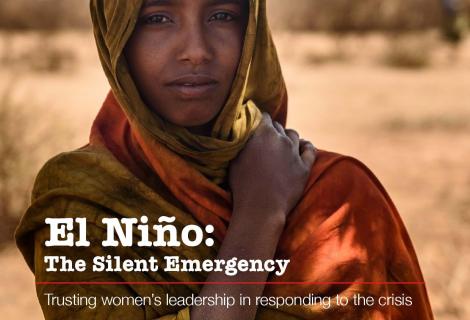
In April 2016, the United Nations Emergency Relief Coordinator, Stephen O’Brien, alerted governments gathered in Geneva that they collectively faced “an alarming funding gap of over $2.2 billion” to respond to El Niño food crisis. As the same donor officials prepare to attend the high level event on El Niño and La Niña on July 19th in New York, the funding gap has increased to a staggering $2.5 billion. Despite this apathy from the international community, organisations like ActionAid are working on the frontline, responding to food shortages and other human impacts of this silent crisis. Through local partners, ActionAid is mobilising and supporting communities, women and other actors to face one of the most interminable and complex slow onset disasters encountered throughout the organisation’s history.
Key messages:
The world needs to wake up to a silent emergency: millions of people are hungry across Africa, Asia and Latin America, as one of the most widespread hunger emergencies in living memory takes hold. A combination of extreme weather, lack of early action and long term investment into resilience building has destroyed crops, killed livestock and dried up water sources around the world. So far the commitments of international governments to support the 60 million people affected has been extremely weak and only one third of the money needed has been raised.
We must not wait for the worst to happen : action now can still save lives: widespread suffering, death and disease are not inevitable in 2016 or 2017. The effects of drought on food security and agricultural production are predictable and preventable. Working together, national and international NGO, governments and other aid agencies have the ability to respond and save millions of lives. Efforts must be focused on building climate resilience and the capacity to respond to future shocks. The world’s response to the hunger caused by El Niño is a test of how we will cope in the future as climate change brings more erratic weather to many different parts of the globe.
Women and girls are amongst the worst affected but also hold the key to responding to this crisis: women play pivotal roles in supporting families and the community. Women do the unpaid care work in households as well as make up 43 per cent of the agricultural workforce and manage up to 90 per cent of staple food crop production such as maize and rice. Women’s movements and organisations, women emergency first responders and women farmers must be central in deciding how aid is delivered now and how communities can be prepared for more climate-related emergencies in the future.